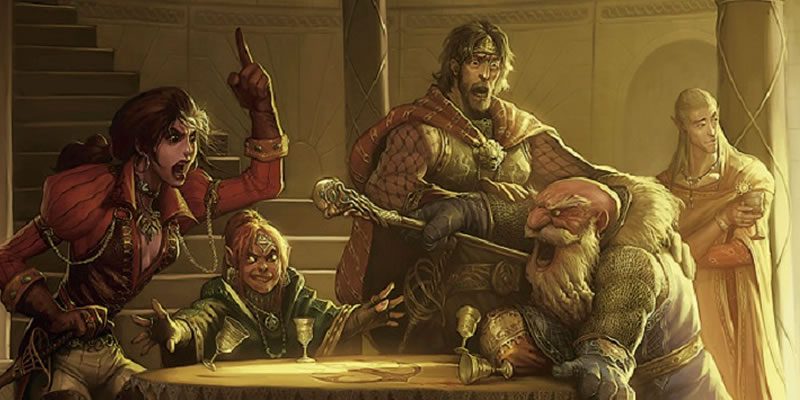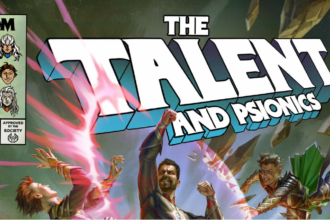Get to Know the Kenku
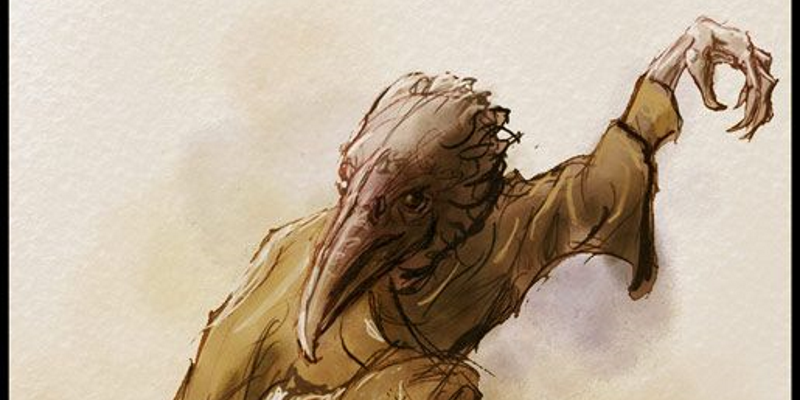
Last week, I spent a little bit of time talking about a creature I thought was cool and didn’t get enough recognition — the azer. The response was overwhelmingly positive, so I thought I would discuss one of my other favorite creatures in D&D: the kenku. For the unaware, kenku are awesome crow people (except for when they are hawk people), and have an entire weird culture built, on the surface at any rate, around the idea that crows are clever thieves. Kenku are much more than that, and have some pretty great backstory that is modular and capable of fitting into many a campaign.
Before proceeding, I would be remiss if I didn’t mention that the kenku are largely based on the tengu of Japanese folklore. While the imaging of the tengu has changed over the years, the earliest renditions depict them as creatures with both human and avian features. As befits the surrounding lore I will discuss later on, Buddhists considered the tengu to be demons and harbingers of war. This changed over time, as tengu came to be seen as protective, but still scary and dangerous, spirits of the wilds. Tengu are also associated with attaining “oneness” with nature, and undergoing an “awakening.” Not much of this survived in the kenku, though kenku monks and a kenku monastery would be fantastic and fit very well
.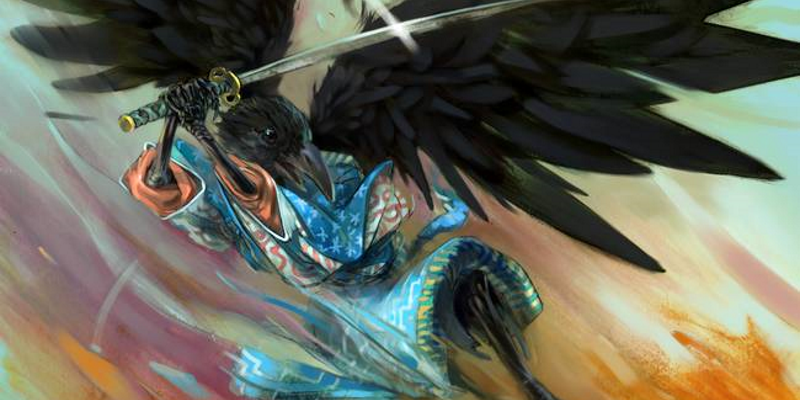
Kenku crop back all the way in 1981, appearing in the Fiend Folio. They survived into 2nd edition, with entries in both the Monstrous Compendium Volume Two in 1989, and 1993’s Monstrous Manual. The kenku changed and expanded in 3rd edition, though it took three whole volumes of Monstrous Manuals for them to appear. A new variant of kenku was added, and their personalities were altered. Luckily, this doesn’t stick around into later editions. They were further expanded in issues of Dragon and Dungeon the following year, which is neat to see, even if it’s a variant I don’t care for all that much (#notmykenku). 4th edition sees them return to their former selves, though again they aren’t a main book entry. Still, 2009’s Monster Manual 2 is a full book sooner than 3rd. This history might give you an idea of why I was so excited to see them released with the core books for 5th edition, in 2014. Finally, they hit the big time. Well, sorta. Their entry is pretty sparse. Still, first book!
In the first three entries, kenku were of the neutral alignment, which is great. I’m a huge fan of creatures that require interaction and aren’t just battle fodder, though I have used them that way in the past in a specific instance. As I mentioned above, 3rd edition saw them changed to neutral evil, playing up their covetous natures, as we all know neutral evil is just code for neutral greedy. In 4th they reverted to just plain neutral, while 5th edition actually changes them again, making them chaotic neutral. I assume this is because all birds are insane things that make no sense. I think it is actually supposed to capture a bit of their story heritage, while also making a statement about migratory creatures. Yes, crows migrate. Well, some populations of crows migrate. Well, sometimes just certain crows within those populations migrate. Well, sometimes none of them migrate. Ok, so maybe the chaotic designator makes some sense.
In the current edition, kenku are basically con men. They dress in rags, they wander the world, they are driven by greed, and they can imitate any sound that they hear. I’m pretty sure they are going to sell you some roofing work, and then skip town once the gold clears. Before you roll your eyes, it’s worth hearing the rest of the lore. You see, kenku were cursed for their greed by a vengeful god, whose name is forgotten (which is great for setting drop in), and no longer possess the ability to fly. The kenku once flew in the wind and spoke in song. As time passed, they became obsessed with the gold and treasures their god possessed, and stole from his hoard the secrets of speech (thus explaining their mimicry in an in-world manner). They dressed as beggars to hide their feathery form, and used it to swindle people out of their possessions, so they could have glittering treasure of their own. When their god discovered their deceit, the kenku had their wings stripped from them, preventing them from naturally flying ever again. This memory of once being able to fly, and still possessing much of the correct anatomy to do so, constantly torments the kenku. In fact, their entire culture is centered around it. When doling out punishments, those being punished are forced to wear heavy, false wings. If a crime is truly atrocious, they are hurled from a high cliff, plummeting to their death. This is the type of detail I love. It gives the kenku a type of humanity and sadness you rarely get to see from a splash monster page.
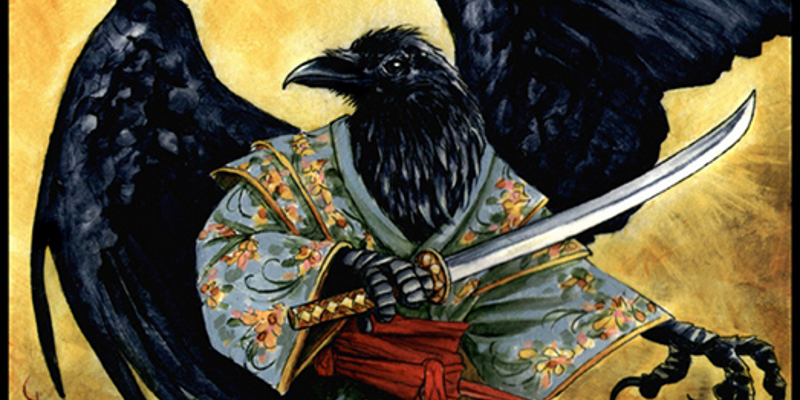
Though the god isn’t explicitly named, it’s probably Quorlinn. Quorlinn is a trickster god of the kenku, appearing masked and in rags, just as they do. Quorlinn appeared quite a bit in Planescape stuff, including On Hallowed Ground, a book I have mentioned many times for being one of the best D&D books ever written. Quorlinn is generally good natured, though he can be a jerk at times. He likes pranks, but isn’t typically malicious. Quorlinn’s own history is equally as sad, though his ends on a happy note. Quorlinn was created as a failed experiment by a god of the sky. The god was too embarrassed to admit the failure, and thus Quorlinn lived on. Quorlinn went on adventures and performed deeds of intellect, wit, and dexterity. He conquered what was thrown at him, and thus he was granted godhood. One creation myth has the kenku created as a reward for his godhood, in the hopes they would keep him busy enough to ensure Quorlinn stayed out of the hair of the other gods.
On the flipside, evil kenku find themselves in service to Demon Prince Pazuzu. Pazuzu is the demon lord of the Lower Aerial Kingdom, and appears as a scary crow demon. Pazuzu is much like Quorlinn, in that Pazuzu has managed to thrive against all odds. He’s one of the oldest demon lords, and is one of the few surviving obyrith. This actually puts him in the league of Dagon and the Queen of Chaos. He doesn’t want to conquer the rest of the Abyss, either. He wants to deceive, trick, and coerce people on the prime worlds. He is the malicious, devious trickster to Quorlinn’s good-spirited prankster. He is also the source of the other creation myth of the kenku. According to some stories, Pazuzu convinced a group that a horrible plague was coming, and the only way to survive it was to accept his assistance. The group that did so were transformed into kenku to “protect” them. In another twist I love, the other demon lords, yugoloths, and lords of Hell all like Pazuzu, again mirroring Quorlinn.
Also, for some reason, kenku clerics worship Vecna. I’ve got nothing there. I assume it has to do with the concept of the kenku stealing the knowledge of powerful speech from their original deity they served. Thus, forbidden knowledge is totally a Vecna thing. That’s the theory I’ve got, anyway.
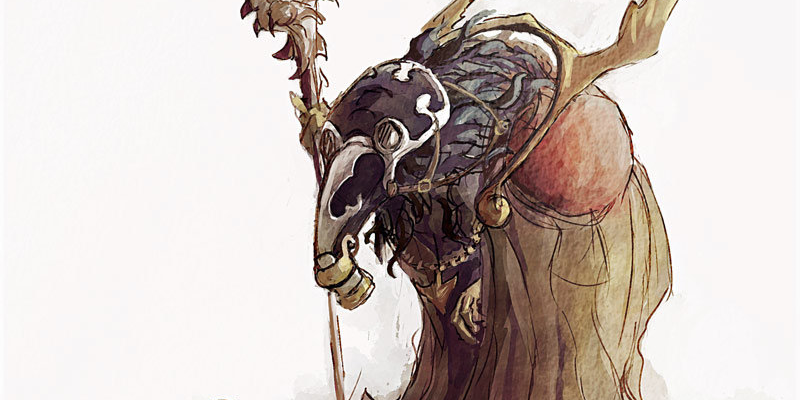
The thing I like most about the kenku is their emphasis on wit. They can serve as political or social rivals to players in ways that both make sense, and can be fun without devolving into a combat scenario. Kenku are not bad combatants, but they would rather talk than fight. I’m really big on encounters that provide pressure and tension, but aren’t resolvable by combat. Again, it’s all about supporting the multiple pillars of gameplay, right? Kenku also desire treasure and forbidden knowledge. They can serve as allies in exploration, or again provide conflict. It’s very easy to make it all tied to their tragic backstory, as well. The kenku are doing these things to find a way to again take to the sky, and regain the innocence and purity of what they once were. However, they have been cursed to be unable to do so in ways that are not the cause of their downfall. I find it very easy to make a kenku sympathetic, even if it’s an antagonist.
You’ll find more than a few commonalities between the azer and the kenku. It’s easy to see why I like one, since I like the other. Hopefully, this brief overview of why the kenku are one of my favorite creatures has shed some light on a creature you didn’t know much about. The kenku lore is so open-ended that they can easily be slotted into just about any game. They aren’t common in most games I have heard of, again anecdotally, so it’s something you can use to branch out from the expected. Unless you are me, I guess. Maybe you’ll even learn to love the sad, feathered guys as much as me. I can only hope so, they deserve it.

